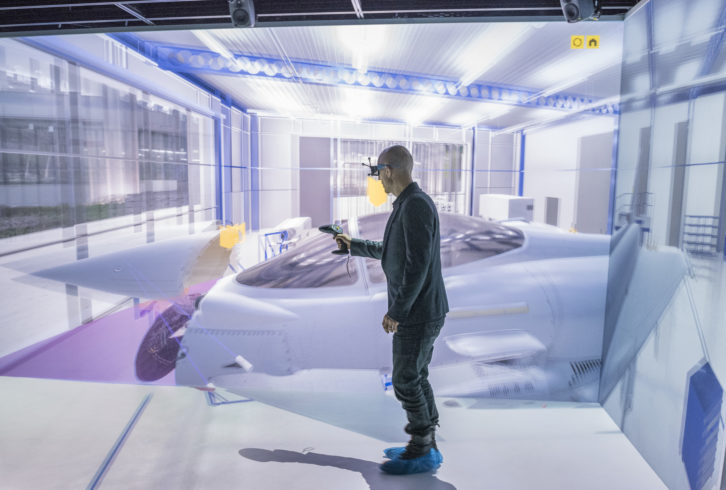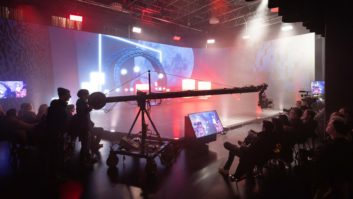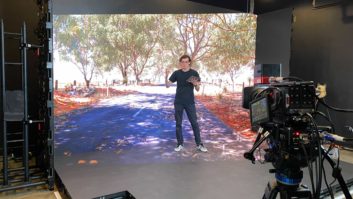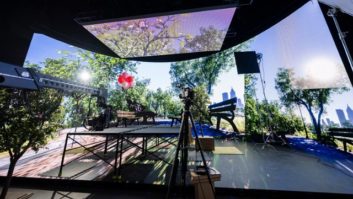
Having previously considered whether key XR vendors are shifting attention to the enterprise market, here Ian McMurray looks at the ways the different technologies can improve customer experience tempered by some of the barriers to wider adoption.
A challenge noted by many commentators is that to use the term ‘XR’ is potentially confusing. Use cases for, for example, VR and AR are very different – and the technologies required to make them a commercial reality are at varying levels of development. IDC, for example, believes that VR continues to be primarily a consumer technology – while AR is finding greater traction in business, and is overtaking VR in terms of market share.
“AR in enterprise enables workers to be more productive and to work more efficiently and safely,” notes IDC research analyst Giulia Carosella. “DHL, for example, has implemented an AR solution to provide workers with picking instructions, and Volkswagen is using AR for indoor navigation at some of its factories.”
“Retailers are looking into AR apps for smartphones to improve customer experience and keep clients engaged,” she adds, pointing out that VR and AR technology adoption in Europe has doubled year on year.
For most, the single biggest barrier to widespread adoption of VR has been the requirement for a headset. While these have developed rapidly to become less cumbersome and intrusive, they don’t lend themselves easily to the kind of collaborative, shared experiences that have long been at the heart of the AV business: they’re often described as ‘isolating’.
Imprisoned and alone
“Communication is not an easy task, because headsets can sometimes be seen as a bit ridiculous with their users imprisoned and alone in virtual worlds,” smiles Holovis creative director, Peter Cliff. Certainly, if you’ve ever watched someone in a VR headset and wondered what on earth they’re doing, his sentiment has resonance.
Things are changing, however: the state of the art continues to move forward. Historically, there were, in essence, two types of VR headset. In the consumer world, these are perhaps best illustrated by the Oculus Go, on the one hand, and the HTC Vive Pro on the other. The Go provides complete freedom to move around – but is capable of less immersive experiences. The HTC Vive Pro must be ‘tethered’ to a powerful PC (either via cable or wirelessly) but because of the greater compute performance available, it is capable of delivering a more compelling experience.
“It will take more serious industrial investment before hardware technology can meet the requirements of our software prophecies”
Oliver Ellmers, Pixel Artworks
However: in 2019, Oculus launched the Quest – more powerful than the Go, but with the compelling advantage of PC-less use. It’s indicative of the direction in which VR headsets are heading: greater onboard compute power enabling more ergonomic headsets. The company also announced Oculus Link, a bridge between its PC-less and connected offerings. Futuresource market analyst James Manning Smith notes how new technologies such as SLAM (Simulation Localisation and Mapping) – constructing or updating a map of an unknown environment while simultaneously keeping track of an agent’s location within it – and Inside-out tracking – in which sensors and cameras are located on the device to be tracked rather than on a stationary external location – are delivering new levels of capability.
Oliver Ellmers, interactive developer at specialists in light and pixel technologies Pixel Artworks, sees hardware technology lagging software.
“Generally, software technology is a few years ahead of hardware technology,” he says. “It will take more serious industrial investment before hardware technology can meet the requirements of our software prophecies. However: we are seeing hardware evolution becoming faster and faster, and I think there is a necessity for software to be slightly ahead to drive innovation in solving the hardware problems we face with technology.”
“Whilst hardware continues to develop, and will no doubt greatly improve in the coming years, it has become less of a significant factor in VR uptake in 2018 and 2019,” adds Manning Smith. “Headset design and comfort has improved rapidly in recent years, thanks to innovation in the industry.”
Foolish
According to Fabien Barati, CEO of French VR and AR company Emissive, whose clients include Adidas, BNP, IKEA, Orange and Thales, we’d be foolish to dismiss VR, however.
“I often meet people who don’t want to try VR content because ‘they already did VR’,” he says, pointing out that content quality makes a huge difference to the experience, “but it’s as if they said ‘I don’t want to watch this movie because I’ve already been to a cinema’. It makes no sense.”
It’s inevitable that any discussion of XR will tend to focus on VR because of its ability to create new realities, rather than extend, enhance or augment the real world. For training, for example, it allows trainees to experience situations that would otherwise be too dangerous, too complex or too costly. US retailer Walmart, for instance, uses VR for training its staff on what to do in case of severe weather – and to allow ‘hands on’ employee training without disrupting store operations.
The reality is that, in the near term at least, AR/ER/MR are likely to represent more of an opportunity for the audiovisual industry because of their ability to enhance interaction – whether that’s interaction in a huddle room or between a retailer and a consumer, for example. In conferencing applications, for instance, there is much interest in overlaying information about each speaker in a multi-way video call – especially valuable when participants are not necessarily known to each other. In retail, multiple brands have embraced the opportunity to show customers what a product will look like in their own environment; in trying on clothes; or to see the multiple variations of a product that cannot sensibly be held in stock. There’s also research taking place among retailers in leveraging a consumer’s phone to become an AR platform.
www.emissive.fr
www.futuresource-consulting.com
www.holovis.com
www.idc.com
www.pixelartworks.com






